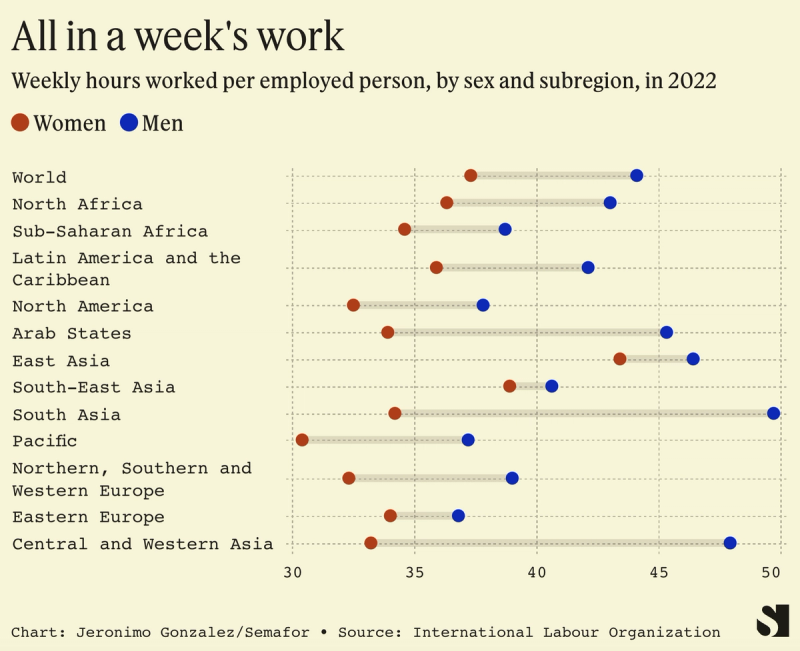The Number
Women worked on average about seven paid hours per week less than men in 2022, according to a new worldwide report from the UN’s International Labour Organization.
“The fewer hours that women spend in paid employment compound the already large gender gaps in employment rates,” the report stated. “The unequal burden of unpaid work that falls on women hence impacts not only their participation in the labour market but also their hours of work when they are employed.”
The gap between men and women’s working hours varied vastly in different regions around the world.

In this article:
Know More
Men in Southeast Asia worked an average of 1.7 hours per week more than women in paid jobs — the lowest gender disparity of any region in the world, according to the ILO’s “World Employment and Social Outlook” report, released Monday.
South Asia, meanwhile, had the largest gender gap in paid working hours, with men working an average of 49.7 hours per week and women working 34.2.
Eastern Europe and East Asia boasted low gender gaps. Both men and women in Eastern Europe worked low hours relative to the rest of the world, while East Asia’s working hours came out on the high end of the spectrum.
Women in East Asia, for example, worked 43.4 paid hours per week in 2022, more than the average man in North America, Africa, Europe, and Latin America.
Now What?
COVID-19 led to a massive decline in working hours worldwide, almost 9%. The global economy has still not returned to its pre-pandemic working activity, the report found.
It predicts that in 2024, the average number of weekly working hours worldwide will still be 1.3% below 2019 levels.
Notable
- A 2017 World Economic Forum study found that on average, women spend nearly an hour longer working per day than men, when both paid and unpaid labor are taken into account.
- Disparities in time at work “are an important aspect of gender inequality,” the Institute for Women’s Policy Research said in a report. “This unequal distribution of time creates barriers to women’s advancement at work and reduces women’s economic security,” the report states.

